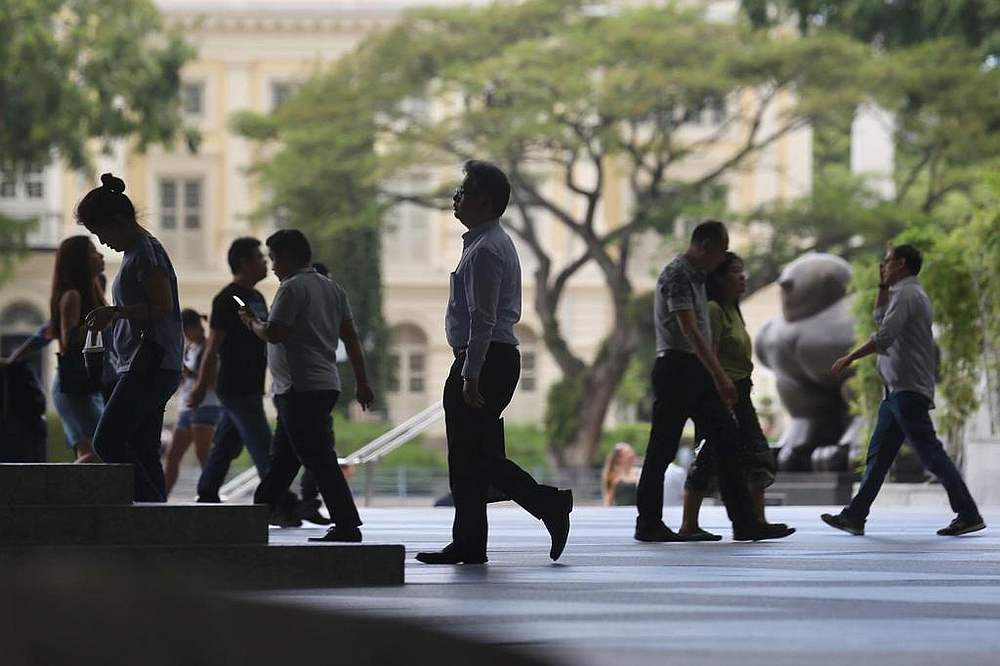SINGAPORE, Oct 28 — Employment prospects in Singapore will continue to remain weak despite the economy rebounding in the third quarter, after a record second quarter recession brought on by the circuit breaker period.
The Monetary Authority of Singapore (MAS) said today that this was likely to be the case as the current economic downturn will be more prolonged than in previous recessions.
Employment is expected to improve only slightly in 2021, said MAS in its twice-yearly macroeconomic review. However, this pick up is not likely to be strong enough to bring the labour market back up to pre-crisis levels even by the end of next year.
“All in, the resident unemployment rate is forecast to only edge down gradually next year. In turn, it is expected to weigh on wages for the rest of this year and possibly into 2021,” said MAS in its October review.
Labour market to remain weak
While the outlook for the job market may have improved from the second quarter after Singapore exited from its circuit breaker, MAS said that certain segments of the economy, such as those related to travel and transport, could continue to shed jobs.
“The downturn in these sectors, in turn, will have spillovers to the rest of the economy, weighing on the overall labour market,” said MAS.
Changes in consumption patterns due to the Covid-19 pandemic could also dampen labour demand in certain sectors persistently, it added.
For example, with work from home becoming more prevalent, demand for domestic transportation, as well as social and recreational services, could be reduced.
While there is a shift in consumer demand towards home entertainment and groceries, it is unlikely to generate a sufficient increase in labour demand to offset the fall in the other sectors, noted MAS.
Job growth in better-performing sectors could slow down as these firms may have brought forward hiring to take advantage of the Government support measures.
“In the absence of a smooth handover from public-supported to private sector-led employment, a strong labour market recovery is not assured at this juncture,” said MAS.
MAS also noted that the resident unemployment rate will remain higher than usual, and it will likely decline more gradually, unlike how it bounced back to pre-crisis levels after six quarters in the wake of the 2008/2009 global financial crisis.
Residents re-entering the labour force as the economy improves, as well as participants in the various traineeship programmes looking for permanent roles and unable to secure them, could add to the number of unemployed workers.
MAS also said that a mismatch in skills being sought by firms and the skills available in the market could also keep unemployment up.
Labour market in the first half of 2020
The number of employed workers fell by 138,400 (113,200 in the second quarter, 25,200 in the first quarter) in the first six months of the year, a 3.7 per cent drop from the end of 2019.
Foreign work pass holders accounted for 55 per cent of the decline.
More than half (54 per cent) of the headcount loss occurred in domestic-oriented services, Except for electronics, insurance, information technology and other information services, all other sectors recorded job losses.
MAS said the drop in the number of employed workers during this downturn has been more rapid than in previous recessions.
As the domestic-oriented and construction sectors, which are highly labour intensive, suffered a significant loss of revenue during the circuit breaker, firms in these sectors chose to cut their staff.
Part-time workers likely accounted for a significant share of those who lost their jobs in the second quarter, the MAS said.
While the number of retrenchments rose, it was still lower than the number of workers who were temporarily laid off or placed on a shorter work week.
Close to 86,000 workers were put on a shorter work week or temporarily laid off in the first six months of 2019, three times the previous high of 26,500 in the first quarter of 2019 during the global financial crisis.
“The more widespread use of short work-week and temporary layoff, sizeable wage subsidies provided under the Jobs Support Scheme (JSS), and foreign worker levy rebates and waivers, likely kept retrenchments in this recession low, despite a sharp reduction in revenue,” noted MAS.
The relatively low number of retrenchments and high temporary reductions of workers suggest that firms may be thinking of quickly recalling their staff and ramping up capacity once operations resume in the third quarter, said MAS. — TODAY






















